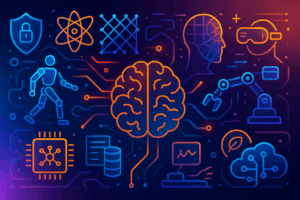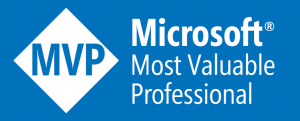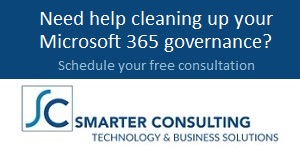Navigating Gartner’s 2025 Strategic Tech Trends
 I keep a running checklist of topics in OneNote that I’d like to write about, and just realized that I’ve been sitting on Gartner’s latest Top Tech Trends for 2025 since December, which was when I came across it and jotted some notes to write about (it was originally published in October 2024). There are ten items on the list, each more buzzword‑heavy than the last. When I first skimmed through them, it felt like reading a sci‑fi shortlist: Agentic AI, Post‑Quantum Cryptography, Spatial Computing… by the time I hit Neurological Enhancement, I half expected to see “Teleportation Interfaces” pop up next (which has been a dream of mine since I was a teen).
I keep a running checklist of topics in OneNote that I’d like to write about, and just realized that I’ve been sitting on Gartner’s latest Top Tech Trends for 2025 since December, which was when I came across it and jotted some notes to write about (it was originally published in October 2024). There are ten items on the list, each more buzzword‑heavy than the last. When I first skimmed through them, it felt like reading a sci‑fi shortlist: Agentic AI, Post‑Quantum Cryptography, Spatial Computing… by the time I hit Neurological Enhancement, I half expected to see “Teleportation Interfaces” pop up next (which has been a dream of mine since I was a teen).
But beneath the technobabble hides a story: businesses caught between “we need to keep up,” “we need to evolve,” and “we have to keep the lights on.” Amidst that tension is where most CIOs thrive. So here’s the assignment: translate these trends into your next move.
Let’s walk through the list, then I’ll unpack five pragmatic steps to ready your workforce — before your competitors do.
The Trends (in plain English)
- Agentic AI
Not just AI that answers, but AI that takes action—booking meetings, running diagnostics—without waiting for your instructions. Savvy, or spooky? Depends on how disciplined your risk team is. - Post‑Quantum Cryptography
Our current encryption is great—until quantum computers render it obsolete. This is your “disaster‑plan before it’s a disaster” trend. - Spatial Computing
Think virtual overlays on the real world. AR/VR for training, design, remote assistance—these are no longer toys; they’re tools. - AI Governance Platforms
AI’s power is cool—until it isn’t. These platforms provide guardrails: bias checks, versioning, audit logs—the kind of oversight your board will sleep better knowing you have. - Ambient Invisible Intelligence
Machines that watch, listen, infer—and then act quietly. It’s the “smart everything” era: buildings that adjust HVAC, apps predicting your next move. Just… don’t creep your users out. - Polyfunctional Robots
Robots able to switch between tasks—warehouse to frontline, weld to deliver. A logistical Swiss Army knife, if you will. - Disinformation Security
Fake news and phishing get louder by the day. These tools help you safeguard your brand and your employees from engineered scams. - Energy‑Efficient Computing
Tech takes energy. These are the innovations that literally help your datacenters sip, not guzzle. - Neurological Enhancement
Think wearables that read your brainwaves—or even devices that modulate your mood. Half the workforce might greet this with “research!”—the other half, with “personal privacy alert.” - Hybrid Computing
Combining cloud and on‑prem, specialized hardware and GPUs, even clever local‑edge setups. It’s the Goldilocks zone—just the right mix for performance, cost, and compliance.
Five Steps CIOs Can Take Now
Trends are exciting, but they don’t move the needle on their own—execution does. That’s where CIOs come in: not just to track emerging tech, but to translate possibility into progress. And in 2025, success won’t come from chasing hype; it will come from laying the groundwork that allows innovation to stick, scale, and deliver value.
The ten trends Gartner outlines aren’t just technical shifts—they represent fundamental changes in how organizations operate, how value is created, and how people work. Navigating that terrain means thinking like a portfolio manager: balancing short-term wins with long-term bets, managing risk while fueling experimentation, and preparing your workforce to thrive amid the noise.
This isn’t about reacting. It’s about structuring your organization—technically, culturally, operationally—to absorb these disruptions on your own terms. The following five moves aren’t trend-by-trend instructions. They’re strategic levers that any CIO can pull to turn this next wave of transformation into a competitive edge.
1. Prioritize with a Sharp Lens
Don’t treat the entire list like a buffet—nibble, taste, pick your plate. Use Gartner’s combo of trend significance, maturity, and business alignment to plot your moves. For instance: if your org handles personal data, Post‑Quantum Cryptography and Disinformation Security likely outrank Neurological Enhancement on urgency. Build a 90‑day “trend triage” sprint.
2. Pilot Smart, Scale Fast
Take one trend, toss it to a small innovation team—maybe that “ambient” HVAC sensor or a spatial‑computing AR aid for field techs. Run a six‑ to nine‑month pilot. Measure impact in user adoption, efficiency, ROI. Then scale the winners. The key? Small teams, big ambition, clear KPIs.
3. Build Governance By Default
Technology roll‑outs without guardrails are lawsuits waiting to happen. From Agentic AI to Neurological Enhancement, work with compliance, legal, and HR to put in place guardrails now. Adopt an AI governance platform—not in year three, but in year one of your pilot. That protects your brand—and gives execs confidence when you ask for budget.
4. Upskill to the Next Normal
Tech isn’t plug‑and‑play if your people aren’t ready. Map current employee skills—AI literacy, data hygiene, quantum risk awareness—and compare them to what’s needed. Launch bite‑sized learning paths: “Intro to Spatial Computing,” “Energy‑Efficient Coding 101,” “Ethical AI in Practice.” Don’t treat it as optional. Let employees earn badges or recognition for completing modules.
5. Plan Infrastructure the Hybrid Way
Trends like Hybrid Computing, Post‑Quantum Cryptography, and Energy‑Efficient Computing require flexibility in your architecture. Build a layered infrastructure roadmap—public cloud for agility; private/edge for sensitive work; specialized accelerators for compute‑heavy tasks. Think of it like building a house on stilts: it can flex, adapt, withstand storms, and plug into solar panels when needed.
Wrapping It All Up
Let’s zoom out for a minute: Gartner’s 2025 trends aren’t a crystal‑ball prophecy—they’re a “heads‑up, game‑changing tech is on the horizon.” For CIOs and senior tech leaders, your job isn’t to chase every acronym. It’s to engineer optionality: to prepare, test, govern, educate, and build the infra that lets you plug in tomorrow’s tools without collapsing under the load.
The guidance above aren’t abstract exercises—they’re the pieces you need to move from talking about “digital transformation” to actually being transformed.
Your call to action? Book a two‑hour offsite with your senior team—get the trends on a whiteboard, debate them, pick your top two to pilot this quarter. You’ll leave with a shared roadmap, budget asks prepped, and one word printed on the agenda: preparedness.
After all, tomorrow’s competitive edge isn’t technology. It’s how fast you can learn it, guard it, and put it to real work—while everyone else is still scratching their heads.




